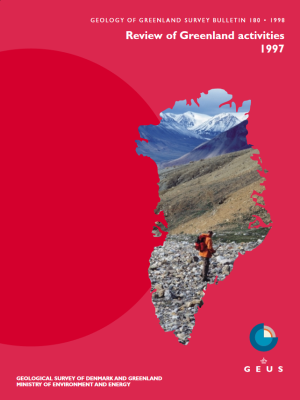Labrador Sea circulation and climate variability over decade to millennial time scales
DOI:
https://doi.org/10.34194/ggub.v180.5103Abstract
The Labrador Sea is one of the primary areas of deep water formation in the North Atlantic Ocean, and is therefore a key region for regional- and global-scale ocean thermohaline circulation and climate variability studies (e.g. Sy et al. 1997). Since high resolution records are difficult to obtain due to low sedimentation rates and bioturbation in the Labrador Sea itself high resolution proxy records must come from regions surrounding the Labrador Sea. Here we report on reconnaissance work carried out on coastal lakes in Greenland. The primary objective of this study is to generate annually-dated lake sediment records of climate variability for the last 2000 years. A second objective is to generate century-resolved, quantified, radiocarbon dated records that extend back to the last deglaciation. Finally, we will also attempt to retrieve lake sediments from ice-free time periods of the last glacial stage or the last interglacial stage; such pre-Holocene lake sediments have already been successfully recovered from lakes on Baffin Island, in Canada (Wolfe & Härtling 1996; Miller et al. in press). This work will improve the understanding of how the Labrador Sea modulates ocean circulation as well as North Atlantic, Arctic, and global climate. Reconnaissance field work was carried out in West Greenland in the summer of 1996 (Anderson & Bennike 1997); in the summer of 1997 further reconnaissance studies were undertaken in the area between Kap Farvel and Søndre Strømfjord (Fig. 1). The objectives of these studies were to locate basins with annually laminated (varved) sediments, as such sediments allow a dating uncertainty of only a few years (Hughen et al. 1996). We concentrated our initial efforts on low-elevation isolated basins which can contain salt water below a freshwater cap as a result of recent isostatic uplift or tidal interaction with the modern ocean. These basins can become density stratified and meromictic, resulting in anoxic bottom water and the preservation of laminated sediment (Fig. 2). Similar basins are well known from arctic Canada where they have provided high resolution proxy climate records for periods of up to 500 years (Hughen et al. 1996). The lake Sælsøen in North-East Greenland, at latitude 77°N, is the only such isolated basin previously identified in Greenland (Trolle 1913). In addition to the work in Greenland, similar work is also in progress on coastal Labrador, on the southwestern side of the Labrador Sea.
Downloads
Published
Issue
Section
License
This article is distributed under a CC-BY 4.0 licence, permitting free redistribution and reproduction for any purpose, even commercial, provided proper citation of the original work. Author(s) retain copyright over the article contents.


